This restaurant opened in 2014, the creation of chef/owner Ryan Blackburn. He had previously worked at Martin Wishart and was head chef at Cottage in the Wood in Whinlatter Forest. The restaurant has 36 covers spread across three dining room sections, with just five chefs working in a tiny kitchen. The building is listed, being William Wordsworth’s old sorting office when (in 1813) he was postmaster for the county of Westmoreland, the building dating back to 1700. The rooms have low ceilings, reflecting the history of the property. The format was a tasting menu at £105 per person.
The wine list had 126 labels and ranged in price from £25 to £400, with a median price of £126 and an average markup to retail price of 3.1 times, which is pretty much the UK average at present. Sample references were Edoardo Miroglio Soli White 2022 at £40 for a bottle that you can find in the high street for £14.40, Gresy Chardonnay from Marchesi Di Gresy 2020 at £95 compared to its retail price of £30, and Albarino O Rosal Terras Gauda Bodegas Terras Gauda 2023 at £60 for a wine that will set you back £19 in the high street. For those with the means there was Oremus Tokaji Aszu 5 Putttonyos 2013 at £180 compared to its retail price of £108, and Meursault 1er Cru Genevrières, Domaine Michelot, 2018 at £200 for a wine whose current market value is £114.
The meal began with a pair of canapés. Duck liver parfait came on top of beetroot meringue and Cumberland sauce. The latter dates back to the 19th century and has redcurrant jelly, mustard, port, blanched orange peel, pepper and salt. It was probably named in honour of the Duke of Cumberland, a certain Ernest Augustus, a Hanoverian prince. The version here had horseradish, and its gentle bite complemented the silky duck liver and the sharpness of the beetroot. This was a classy canapé (16/20). Also very good was rabbit cannelloni with piccalilli. The cylinder of pasta had a rich rabbit filling with carrot, the piccalilli adding a little bite. For me a little more piccalilli would have been even better, but this was another very good canapé (15/20).
Local Morecombe shrimps were served with cauliflower purée, roasted almonds, golden raisins soaked in mead and a sauce made with mild curry and honey mead. The shrimps were good but the star of the dish was the sauce, the gentle hint of curry nicely enhancing the naturally sweet potted shrimps. This was a lovely dish (17/20). Last Wolf beer bread was served with Winter Tarn butter. The bread was made from Carrs malted seeded flour and Lost Wolf beer brewed by Peter Unsworth in Cartmel. The butter was handmade by Jeremy Jackson at Winter Tarn Dairy at Crosby Ravensworth. This bread had very good texture.
This was followed by crab with Longtown tomatoes, garlic emulsion and basil sorbet, with tapioca crackers on the side. There was also a little shot glass of clear tomato consommé. The white claw meat was dressed in mayonnaise, apple and lemon juice. The tomatoes themselves are from Cumbria, an area not particularly noted for its hot sunny climate. A tomato pulp is made by breaking the tomatoes up, seasoning them then hanging the pulp. This base is topped with crab, garlic emulsion and basil sorbet, finished with a consommé made from the same tomatoes. The crab had excellent natural sweetness, and basil is a classic companion for tomatoes, which were surprisingly good, with the tapioca crackers adding a contrasting texture (16/20). John Dory with asparagus was next. The fish was roasted and served with Yorkshire asparagus from Spillman’s farm in Thirsk along with an oyster emulsion. A sauce was made with stock based on the John Dory bones, vermouth, fermented white asparagus and dill oil (16/20).
The final savoury course was duck with morels, onion and wild garlic. The duck was from Cready Carver in Devon, a poultry farm set up by Peter and Sue Colman over 30 years ago. The duck was aged for ten days with Himalayan salt bricks, then roasted on the crown. The duck was served with a potato dumpling made with peas, girolle mushrooms, Roscoff onion and pea puree. It was finished with a sauce made from the duck wings and finished with wild garlic stem and oil, mustard seeds, Morteau sausage and blackcurrant vinegar. On the side was brioche bread caramelised in duck fat with the confit leg on top along with a homemade teriyaki sauce. The duck had very good flavour, and the star of the dish for me was the sweet Roscoff onion, the peas also having very good flavour. The sauce had good intensity and the brioche was lovely, not too sweet and the confit duck having plenty of flavour (17/20).
Three desserts were served. The first was strawberry with pistachio, sweet cicely and mascarpone. The sweet cicely was used to make a syrup to dress the strawberries. There were also caramelised pistachios, dehydrated pistachio sponge and mascarpone ice-cream. The strawberries were fine, but the dehydrated sponges had little discernible pistachio flavour (14/20).
This was followed by buttered “sops”, a kind of mousse that was a recipe dating back to 1803. The base is a Radler beer made by Lakes Brew in Kendal,enriched with butter and sweetened with sugar. Milk bread is added, and then blended until smooth. This is garnished with poached cherries, malted barley ice-cream and a tuile made from the crusts of the milk bread. This didn’t really work for me, the dominant flavour being the malt, which overpowered the cherries (14/20 is kind).
Finally, sticky toffee pudding madeleines had reasonable texture but the toffee sauce with rum was extremely sweet, while the madeleines had little flavour. I think that a classical vanilla or lemon madeleine would have worked much better (13/20). Brazil Yellow Bourbon from Difference Coffee was served, but none of their higher end coffees were offered. The £6.50 price for a single espresso seemed high to me, even if it did include a couple of petit fours. However, a bit of marshmallow and a sea buckthorn tart are not really enhancing things, at least for me.
Service was excellent, the various staff members we encountered being friendly and chatty. The bill came to £215 each with wine but before tip, which we left in cash. If you shared a modest bottle of wine then a more typical cost per person might be around £155. Overall, I really enjoyed the meal at The Old Stamp House, the savoury dishes being appealing and executed to a high standard. The score of the meal was dragged down by the desserts, which were simply not at the same level. In the UK there is a shortage of specialist pastry chefs, and those that exist and are good at their jobs are rare, expensive creatures. Few restaurants have a specialist pastry chefs or section outside of hotels or large dining rooms, and it shows when you compare most one-star restaurants in the UK with ones in France, who are blessed with a large cadre of high class pastry chefs. This aside, the overall experience here was very enjoyable.



















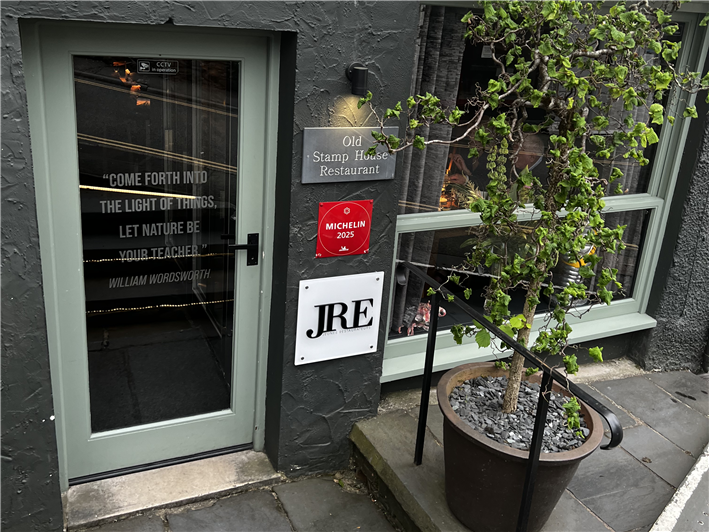

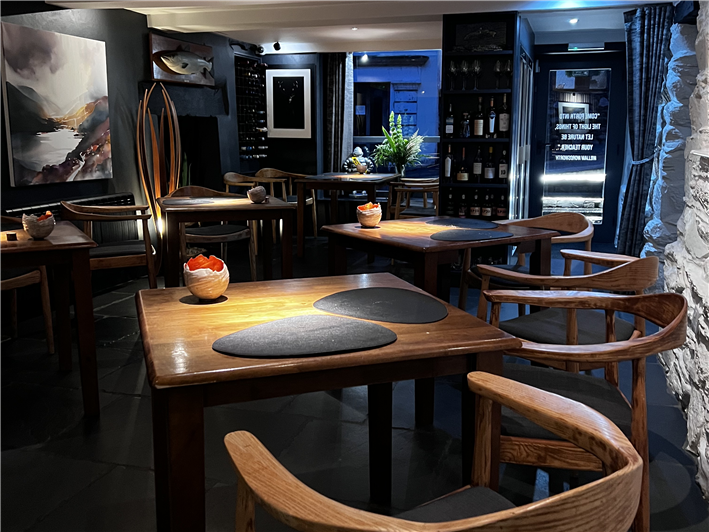
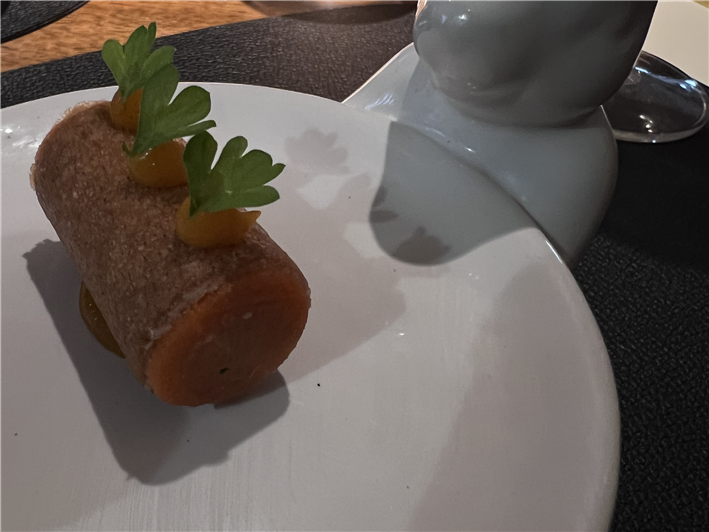
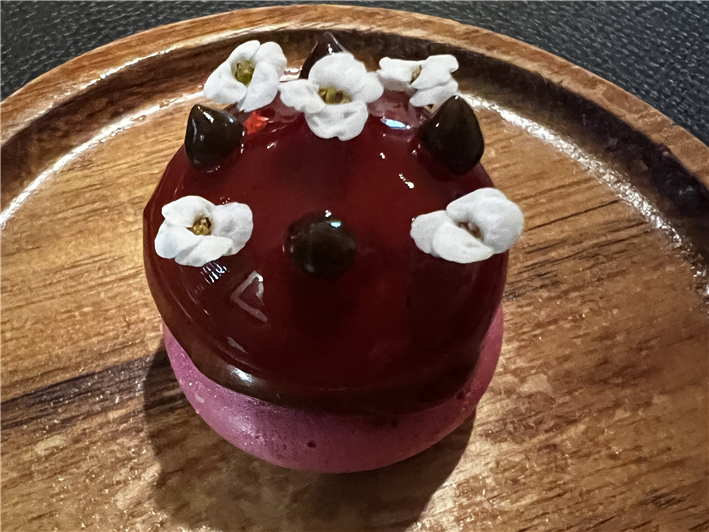
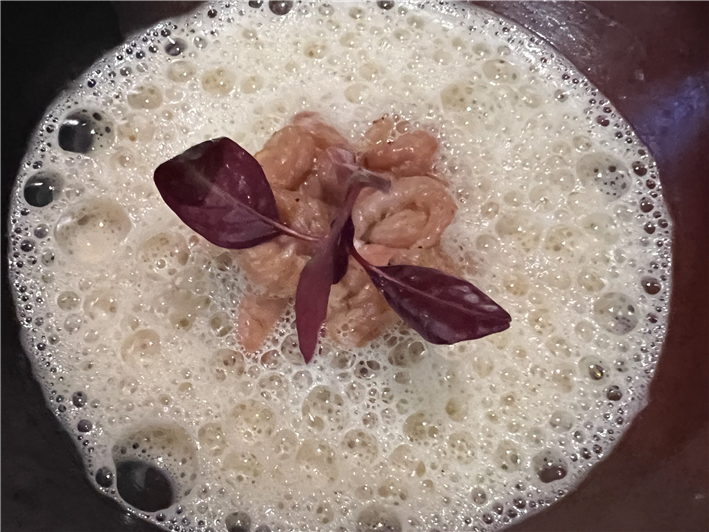

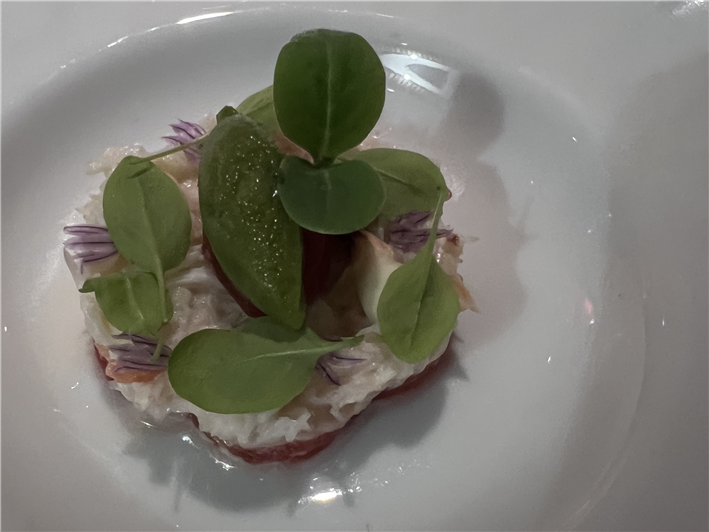
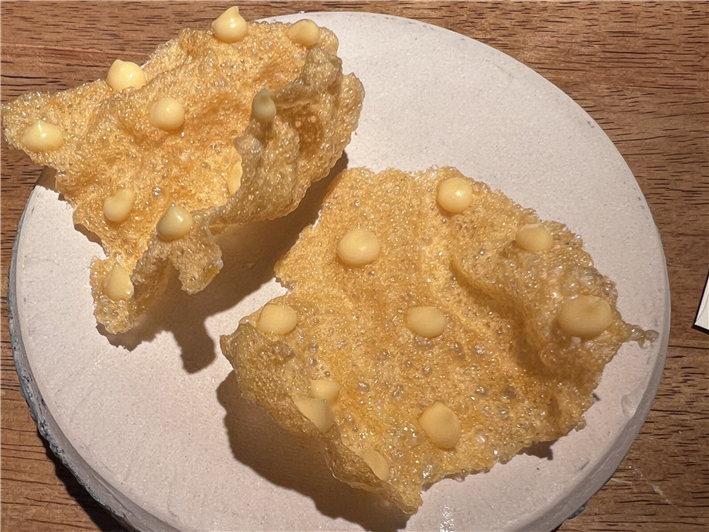
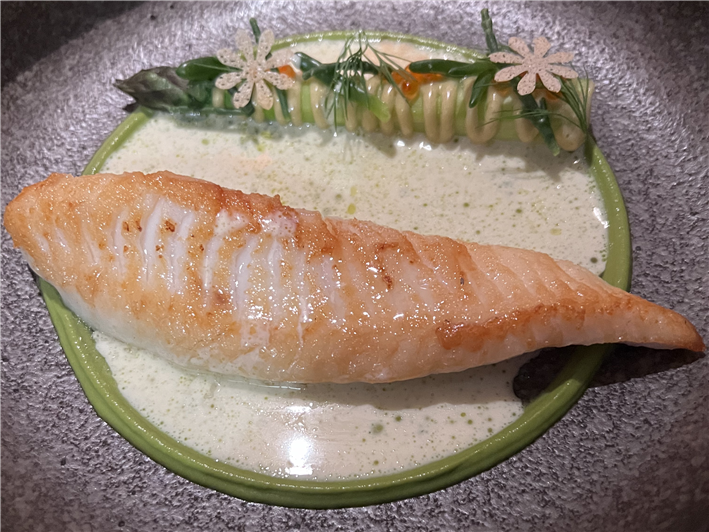
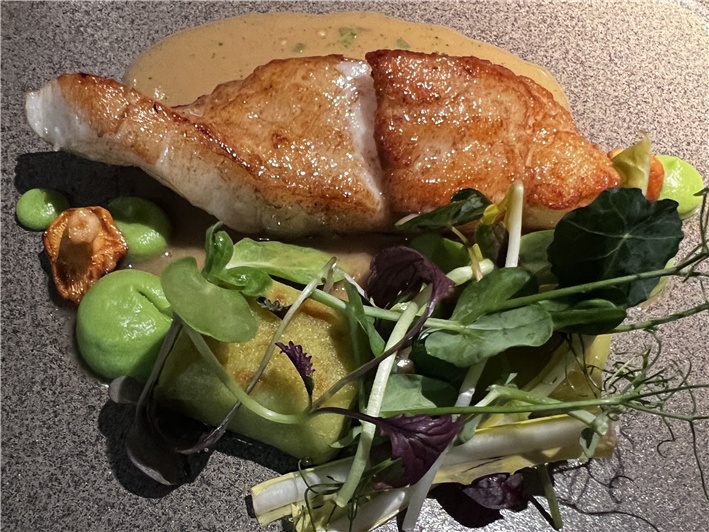
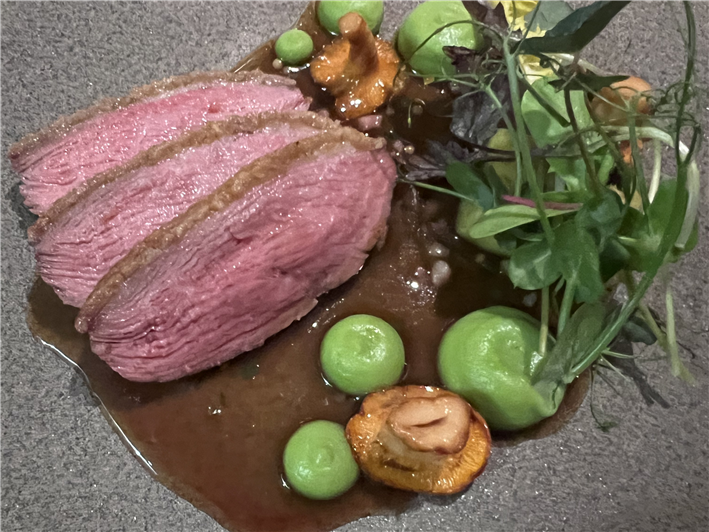
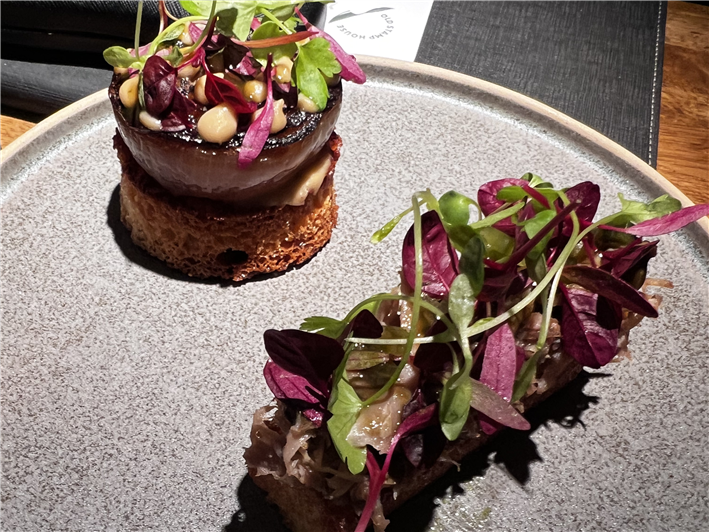
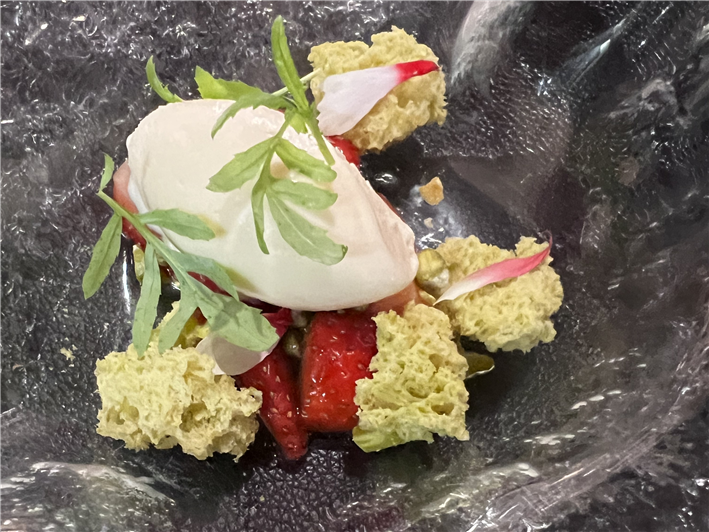
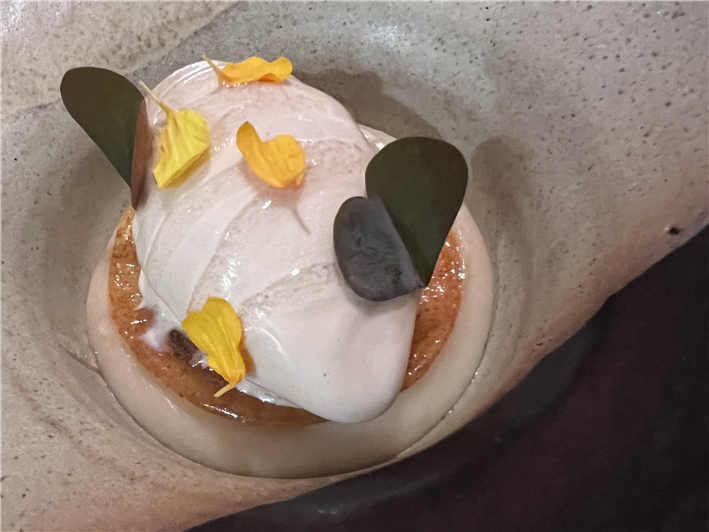
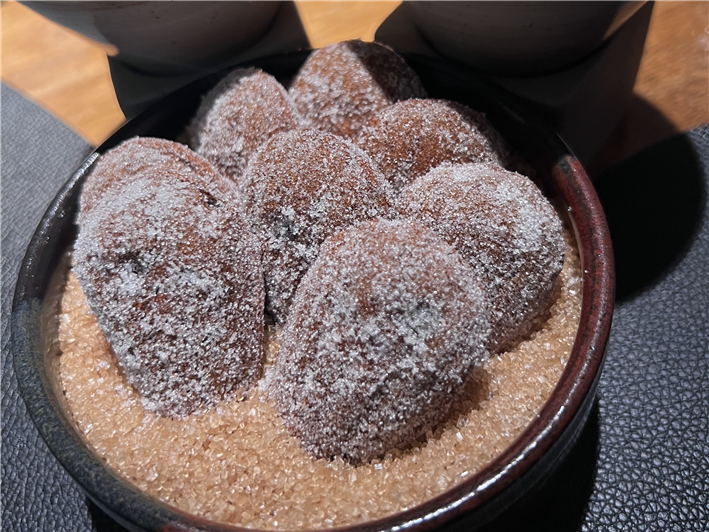
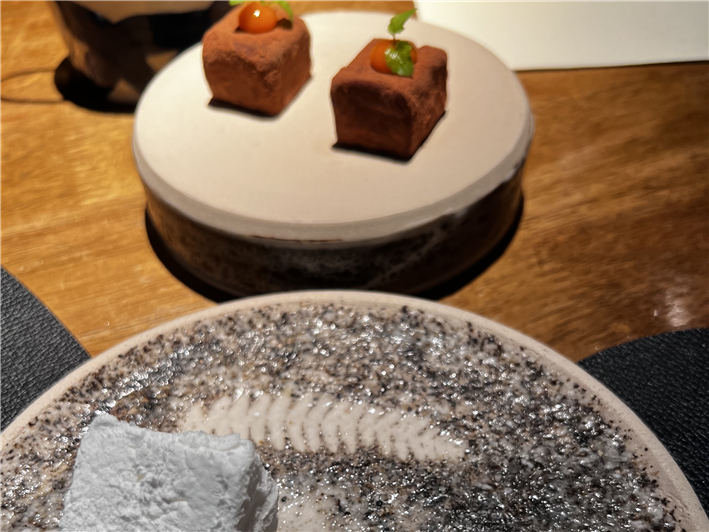
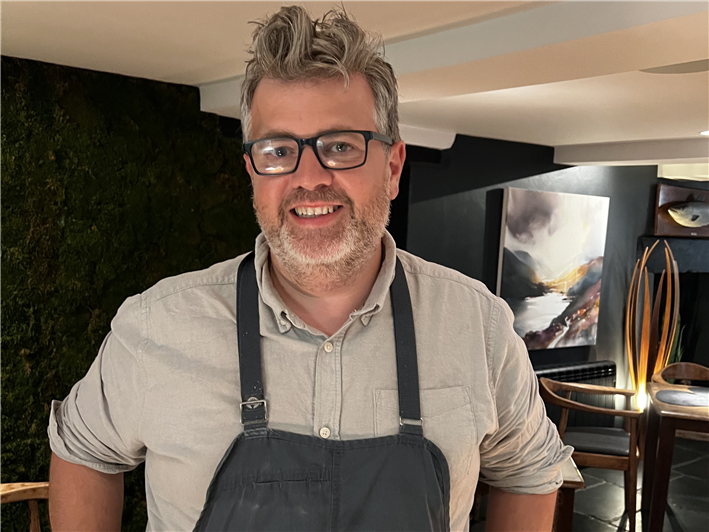

Ben Williams
I am glad you visited the Old Stamp House. We have been twice in the last year, and Ryan's cooking shines in its honesty and autheticity. Happily, I do not have a sweet tooth! Your tribute to the savoury dishes, and kind and enthusiastic staff, is entirely justified.
Nathan
Shame about the desserts, the soufflé he does during the winter with a chocolate sauce is wonderful. But I agree looking at your photos that the desserts you received look very half arsed compared to what I had. Still my number 1 annoyance about British fine dinning. The amount of effort that goes into cooking a piece of meat or fish with a wonderful sauce is never replicated in the later part of the meal. Yet if you go to your mid standard local pub you always remember the puddings - even if the mains were poor.